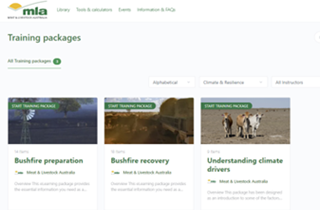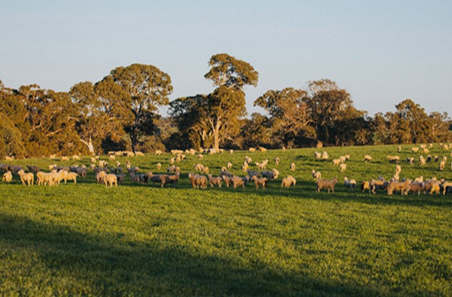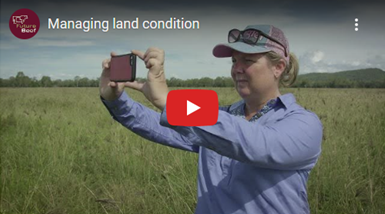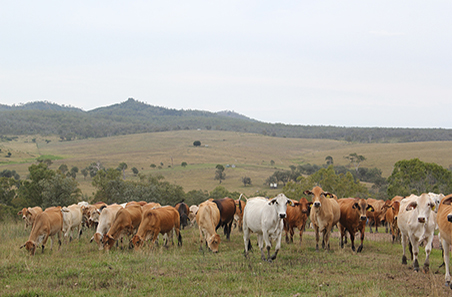Environmental sustainability
Overview
MLA’s investments in environmental sustainability research, development and adoption (RD&A) aim to provide practical solutions for industry to enhance environmental outcomes alongside red meat production.
Ongoing RD&A ensures that all sectors of the value chain are able to demonstrate their sustainability credentials and respond to changing regulatory frameworks, market requirements and community expectations around the sustainability of their products.
Environmental sustainability RD&A covers soil and landscape health, water, greenhouse gas emissions, biodiversity, natural capital, climate variability and waste.
Core activities
Current and recent R&D explores the following areas:
- emissions reduction and carbon storage in the grassfed, grain fed and processing sectors
- soil health and fertility, ground cover, grazing management and landscape function
- opportunities for agro-forestry in grazing systems
- development of the Environmental Credentials platform
- exploring the relationship between natural capital and farm productivity
- understanding climate variability and ways to improve the resilience of red meat operations
- delivering climate forecast products and extension services
- improving shelf life, reducing waste and finding opportunities to convert wastes into value-added products
- sustainable packaging solutions.
Benefits to industry
- improved environmental sustainability that maintains or improves long-term productivity contributes to the industry’s profitability and social licence to operate
- protecting natural resources ensures the industry safeguards the environment and its biodiversity for future generations
- being able to demonstrate the sustainability credentials of Australian red meat may support market access and emerging market opportunities in the future
- finding solutions for waste products can help the industry extract extra value from its products.
Featured resources

MLA’s online training
Use these free training packages to upskill yourself or your staff in different areas of environmental sustainability.

Responding to climate variability
Managing climate variability in the livestock industry is an important strategy for future-proofing the business.

Dung beetles
Dung beetles play a critical role in Australia’s grazing ecosystems. By burying dung in the soil, beetles improve the flow of water, nutrients and carbon into the root zones of pastures.

Trees on farm factsheets
Learn about optimising the co-benefits of trees on your property.
Co-benefit of trees on farm: Carbon sequestration - fact sheet

Making more from sheep: protect your farms
A resource to help you build the capital value and profitability of your sheep enterprise and keep your natural assets functioning effectively.

FutureBeef: Managing land condition
Hear from the FutureBeef team about how land condition is assessed and managed to support carrying capacity.

Native vegetation 1: Assessing the condition of remnant vegetation
Remnant vegetation is an important resource with high biodiversity values. For remnant vegetation to persist and provide ongoing habitat, it must be healthy. Protecting existing remnant vegetation is the number one priority for biodiversity.

More meat, milk and wool: less methane
Developing a better understanding of the science of methane emissions in livestock is critical to helping Australian producers increase productivity and improve sustainability.

Biodiversity toolkit for grazed lands
The cattle, sheep and goat industries in Australia have had an impact on the Australia's biodiversity. This ranges from the direct impacts of land clearing for conversion to exotic pastures, overgrazing and trampling, to indirect impacts such as the introduction of weeds, changes to fire regimes, altered hydrological flows and major impacts on soil.

Grazing Land Management: Sustainable and productive natural resource management
This booklet provides an introduction to the grazing land ecosystem and outlines a section on climate and the relationship between rainfall and pasture growth.


